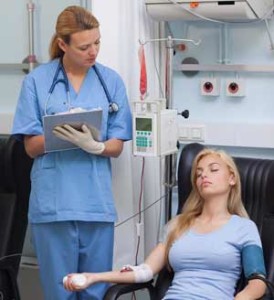Mindfulness exercises to reduce pain
 There are several techniques you can teach yourself to lessen pain. Below are two I find useful and I invite you to add your suggestions in the comments below if you have found other ways that work for you. This blog is about building up a supply of techniques and information to help people reach their meditation goals more quickly and I welcome your input 🙂
There are several techniques you can teach yourself to lessen pain. Below are two I find useful and I invite you to add your suggestions in the comments below if you have found other ways that work for you. This blog is about building up a supply of techniques and information to help people reach their meditation goals more quickly and I welcome your input 🙂
One way to do this is to allow yourself to examine your pain OBJECTIVELY
It is all too easy be become so fearful of the pain that it ends up taking up a huge amount of your thoughts; so much so that sometimes even on pain-free days anxious thoughts pop up, casting a huge shadow over your day 🙁
To help you ease into this objective observance I suggest you do a bit of deep breathing first to let your mind get quiet enough to be able “hear” what your body has to “say”. (basic breathing technique here)
Your body speaks to you in feelings and sensations not words, so when words come up release them and go back to noticing the feelings and sensations.
By examining the pain objectively you may
- Notice the pain is not really as bad as you thought it was. For example it may be a finger that hurts not the whole hand.
- Notice that simple changes to the way you sit or breath may make you more comfortable. For example you may notice
- that when you sit hunched over your computer your back complains more than when you sit up straight.
- that your body is telling you not to sit for too long at a time. When I used to get a sore back, I found that getting up every half hour or so to do a couple of stretches helped to tame the pain. By listening to my body when it told me to stretch it sure made my work day more tolerable!
- Notice if there are certain times of the day the pain is active. By noticing when it is quieter you may be able to reduce how often you take pain meds; Or, you may be able to reduce the amount of medication you take by using techniques like progressive muscle relaxation or deep breathing to take the edge off during quieter times.
If you are taking medicine prescribed by your doctor it is best to follow your doctor’s instructions, at least until you can ask if it is OK to take less. Some meds require a consistent dosage in order to work effectively.
There is no one right way of doing this and I trust you will find the way(s) that work best for you.
Another way is by changing the words you use to describe your pain
I am always amazed at how powerful our words are, especially how we talk to ourselves! By changing the words we use we can change our perception of what is happening in and around us.
Something to remember about this technique is to use positive language rather than negative whenever possible, and for times you do use negative words, use them early in the thought instead of the at the end. Studies show that the brain puts more emphasis on how you end a thought, so help your brain to send messages to your body to release helpful hormones / chemicals rather than stressful ones.
Every time you find yourself thinking negative thoughts, repeat the thought in a more neutral or positive way. It can take quite a bit of practice to change your thought patterns, partly because it takes a while to become conscious of the way you think, after all you may be changing habits that have been around for a long time!
Here are just a few possible substitutes, please change or add as many of your own as fits with the way you talk to yourself. The more you personalize this technique the more effective it is.
- instead of “horribly itchy” use the word “ticklish”
- instead of “burning” how about using “quite warm”
- instead of “terrible” how about “annoying”
- instead of “excruciating” how about “not pleasant”
- instead of “I can’t stand it!” how about “I can handle this”
Here’s a big one … how about changing from despair thinking … you know, the thoughts that sound something like “I ALWAYS hurt!” or “This is NEVER going to end!” to something a little less dramatic and overwhelming? Perhaps “This WILL end, I can hang in there until it does”.
Here is a radical thought … how about noticing the times when there is no pain and choosing to thank your body for feeling fine? Train your mind to recognize that there are times of freedom and to enjoy them.
Second radical thought … how about using distraction to lessen your focus on the pain? My favorite distraction is indulging in something that makes me laugh. The reason that laughter feels so good is that laughter triggers the release of bio-chemicals that are natural pain killers.
Use these techniques to reduce stress and pain. I employ these exercises on an as needed basis 🙂
To your health!
Note – always follow your medical professional’s advice.



 There are times when life feels too busy to take the time for a sit down meditation. Although a full focus meditation seems to bring best results you can still benefit from being “mindful” of what you are doing.
There are times when life feels too busy to take the time for a sit down meditation. Although a full focus meditation seems to bring best results you can still benefit from being “mindful” of what you are doing.
 We all know someone who is too bossy. You know the one – they know exactly what you should do when you should do it and how you should do it. Sometimes they may even be right, but it is hard to agree with someone like that.
We all know someone who is too bossy. You know the one – they know exactly what you should do when you should do it and how you should do it. Sometimes they may even be right, but it is hard to agree with someone like that.